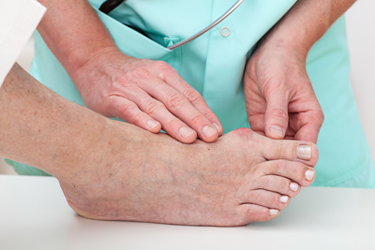
Bunions, medically known as hallux valgus, are a foot deformity that affects the joint at the base of the big toe. This condition occurs when the bone or tissue at the joint shifts out of place, causing the big toe to lean inward toward the other toes. The anatomy of a bunion involves the misalignment of the metatarsophalangeal, known as the MTP, joint that leads to a bony bump on the side of the foot and the deviation of the big toe. Several factors contribute to the development of bunions, including genetics, improper footwear, and structural foot abnormalities. Individuals with a family history of bunions are more predisposed to developing them, as are those who frequently wear tight or narrow shoes that squeeze the toes together. Additionally, conditions, such as flat feet or low arches, can increase the risk of bunions by placing excessive pressure on the MTP joint. Understanding the anatomy and causes of bunions is helpful for effective prevention and treatment strategies. If you have a bunion, it is suggested that you consult a podiatrist who can offer you effective management techniques.
If you are suffering from bunion pain, contact one our our podiatrists of Newtown Comprehensive Foot Care. Our doctors can provide the care you need to keep you pain-free and on your feet.
What Is a Bunion?
Bunions are painful bony bumps that usually develop on the inside of the foot at the joint of the big toe. As the deformity increases over time, it may become painful to walk and wear shoes. Women are more likely to exacerbate existing bunions since they often wear tight, narrow shoes that shift their toes together. Bunion pain can be relieved by wearing wider shoes with enough room for the toes.
Causes
- Genetics – some people inherit feet that are more prone to bunion development
- Inflammatory Conditions - rheumatoid arthritis and polio may cause bunion development
Symptoms
- Redness and inflammation
- Pain and tenderness
- Callus or corns on the bump
- Restricted motion in the big toe
In order to diagnose your bunion, your podiatrist may ask about your medical history, symptoms, and general health. Your doctor might also order an x-ray to take a closer look at your feet. Nonsurgical treatment options include orthotics, padding, icing, changes in footwear, and medication. If nonsurgical treatments don’t alleviate your bunion pain, surgery may be necessary.
If you have any questions, please feel free to contact our office located in Newtown, CT . We offer the newest diagnostic and treatment technologies for all your foot care needs.
